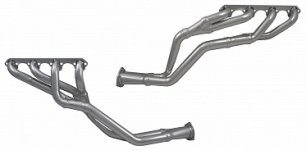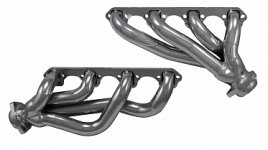GreasyNRusty
New member
I'm going to build a 6-2-1 exhaust system for my primarily street '37 (and no, not an early '37 Mustang design study neither).
Dual 3-1 headers are pretty much easily commercially available, but I haven't yet found dedicated I6 6-2-1 secondary length calcs.
Years back (way, w-a-a-ay back ) (when it was Clifford R&D) Jack Clifford always advised using dual 3-1 long-tube headers, then tying the two collectors to one tailpipe for a street tractor motor, which basically describes my Ferrari wannabe.
) (when it was Clifford R&D) Jack Clifford always advised using dual 3-1 long-tube headers, then tying the two collectors to one tailpipe for a street tractor motor, which basically describes my Ferrari wannabe.
I am trying to get to a length for these dual pipes (secondaries) before tying them together for the single outlet at rear.
Rule of thumb, longer generally works better at street RPM, so I'm thinkin' secondary collectors/X or H-pipe/over the axle/dual-inlet single-outlet muffler, but: can someone refer me to info/equations re post-collector exhaust system system diameters?
Thanks!
Eddie
Dual 3-1 headers are pretty much easily commercially available, but I haven't yet found dedicated I6 6-2-1 secondary length calcs.
Years back (way, w-a-a-ay back
I am trying to get to a length for these dual pipes (secondaries) before tying them together for the single outlet at rear.
Rule of thumb, longer generally works better at street RPM, so I'm thinkin' secondary collectors/X or H-pipe/over the axle/dual-inlet single-outlet muffler, but: can someone refer me to info/equations re post-collector exhaust system system diameters?
Thanks!
Eddie




